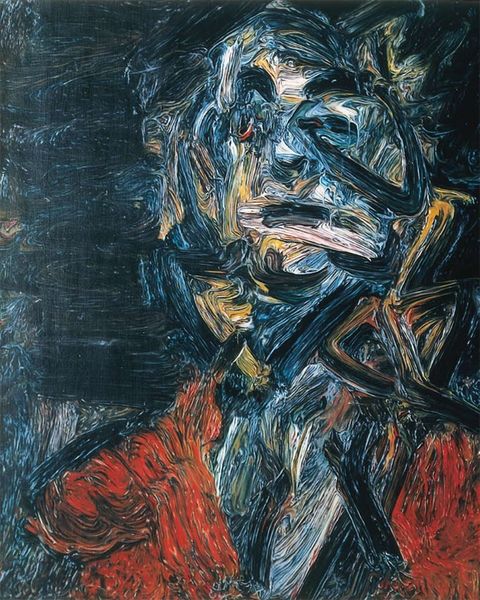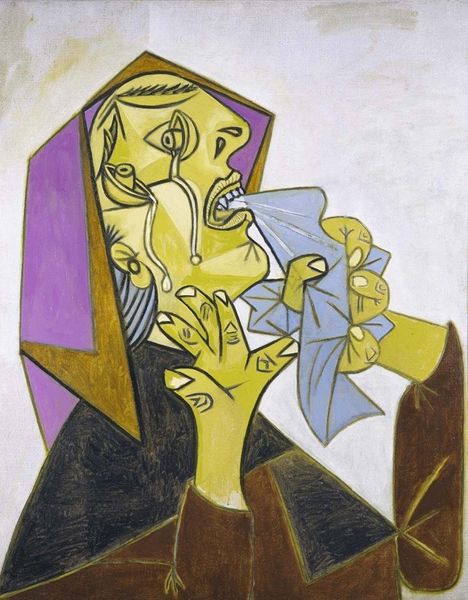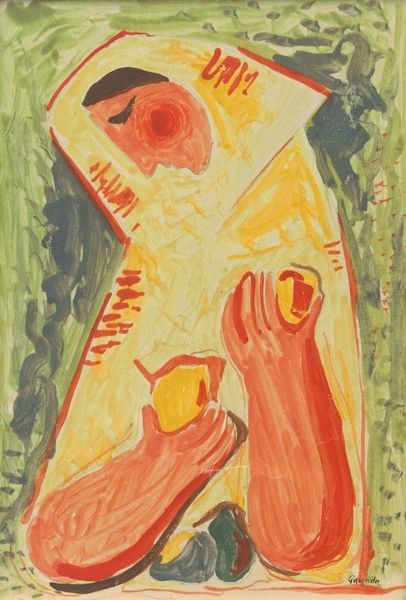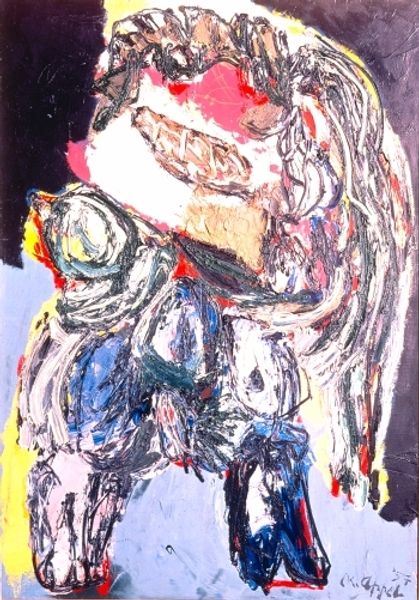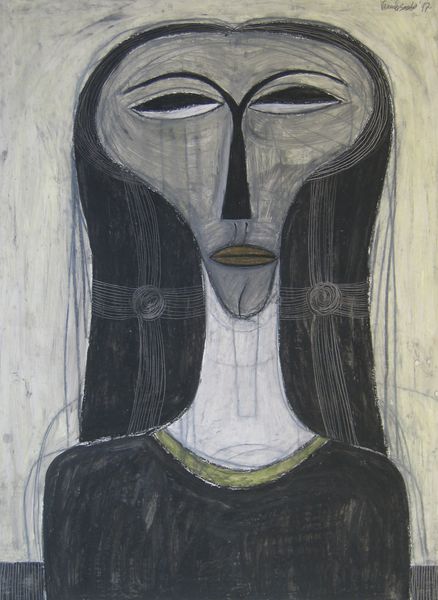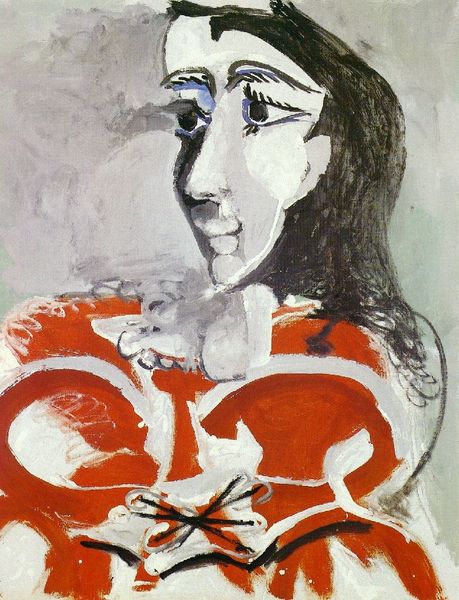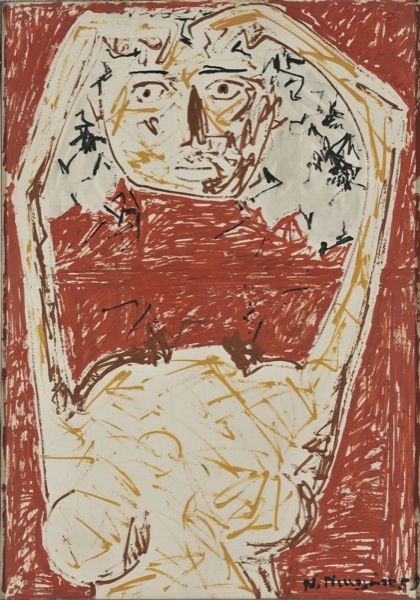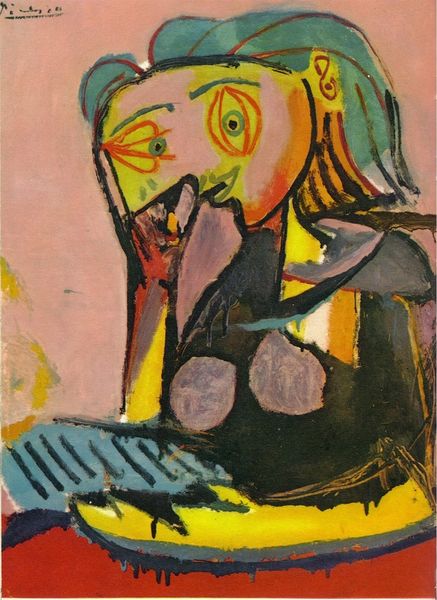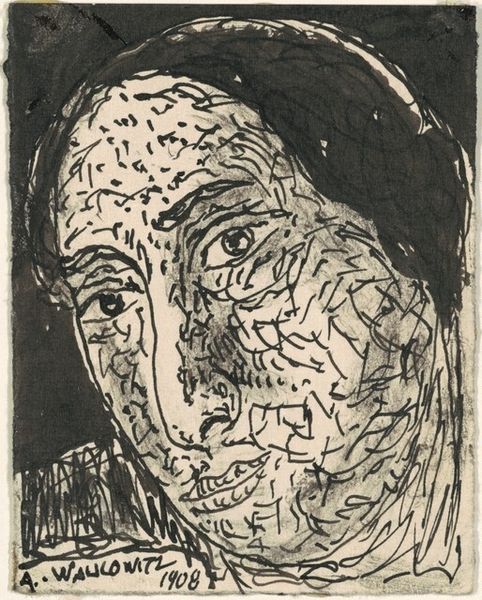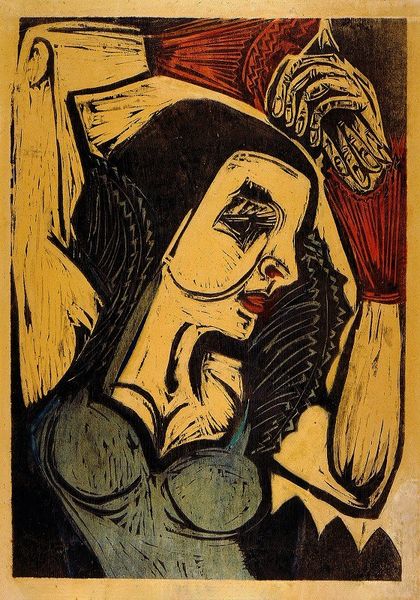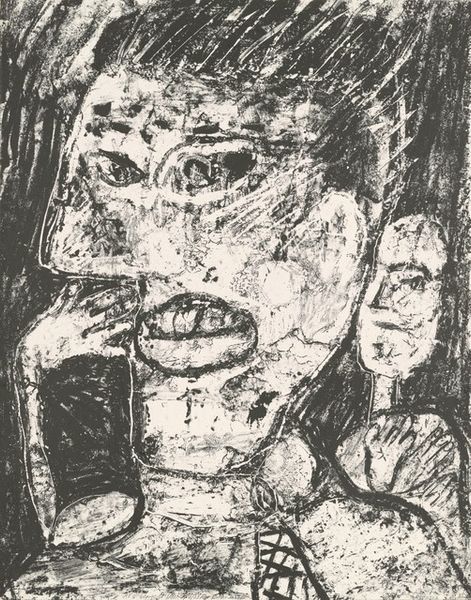
Dimensions: 55 x 46 cm
Copyright: Pablo Picasso,Fair Use
Curator: Here we have Pablo Picasso’s 1937 oil-on-canvas, "Crying Woman." Editor: It's unsettling. The dislocated features, the jagged lines, that acid green and weeping white – it conveys pure anguish. Curator: Precisely. Note how Picasso uses cubist techniques to fragment the face, dismantling traditional notions of portraiture. Observe the disjointed eyes, nose, and mouth, presented from multiple viewpoints simultaneously. Editor: It’s impossible to separate this image from the socio-political context of its creation. As a postscript to "Guernica," the "Crying Woman" echoes the suffering inflicted on civilians during the Spanish Civil War. This is not just a study in form, but a stark depiction of collective trauma experienced by women. Curator: A valid point, however, look closely at the formal aspects of the composition: how Picasso orchestrates color and shape to evoke a specific emotional response. The sharp, angular shapes create a sense of unease. See how he plays with the flatness of the picture plane while suggesting depth through layering and overlapping forms? Editor: But to divorce it from its historical moorings is to strip the work of its power. The handkerchief, a stark white, almost weaponized against the vibrant background. It becomes a symbol of failed attempts at comfort and a signifier of women’s specific experiences of war. Curator: We shouldn't limit ourselves to that interpretation. Think about how the formal elements contribute to the symbolic impact of the handkerchief. The sharp angles mirror the fractured face, reflecting the character’s fragmented emotional state. Editor: To understand art fully is to engage with its ability to hold complex histories of violence, grief, and ultimately, resistance. Curator: I'd suggest instead that this work demonstrates that complex aesthetic arrangements give shape to shared human experience, enabling those histories in the first place. Editor: Perhaps, then, we can agree that “Crying Woman” exemplifies how inextricably form and content, structure and history, remain linked.
Comments
No comments
Be the first to comment and join the conversation on the ultimate creative platform.


